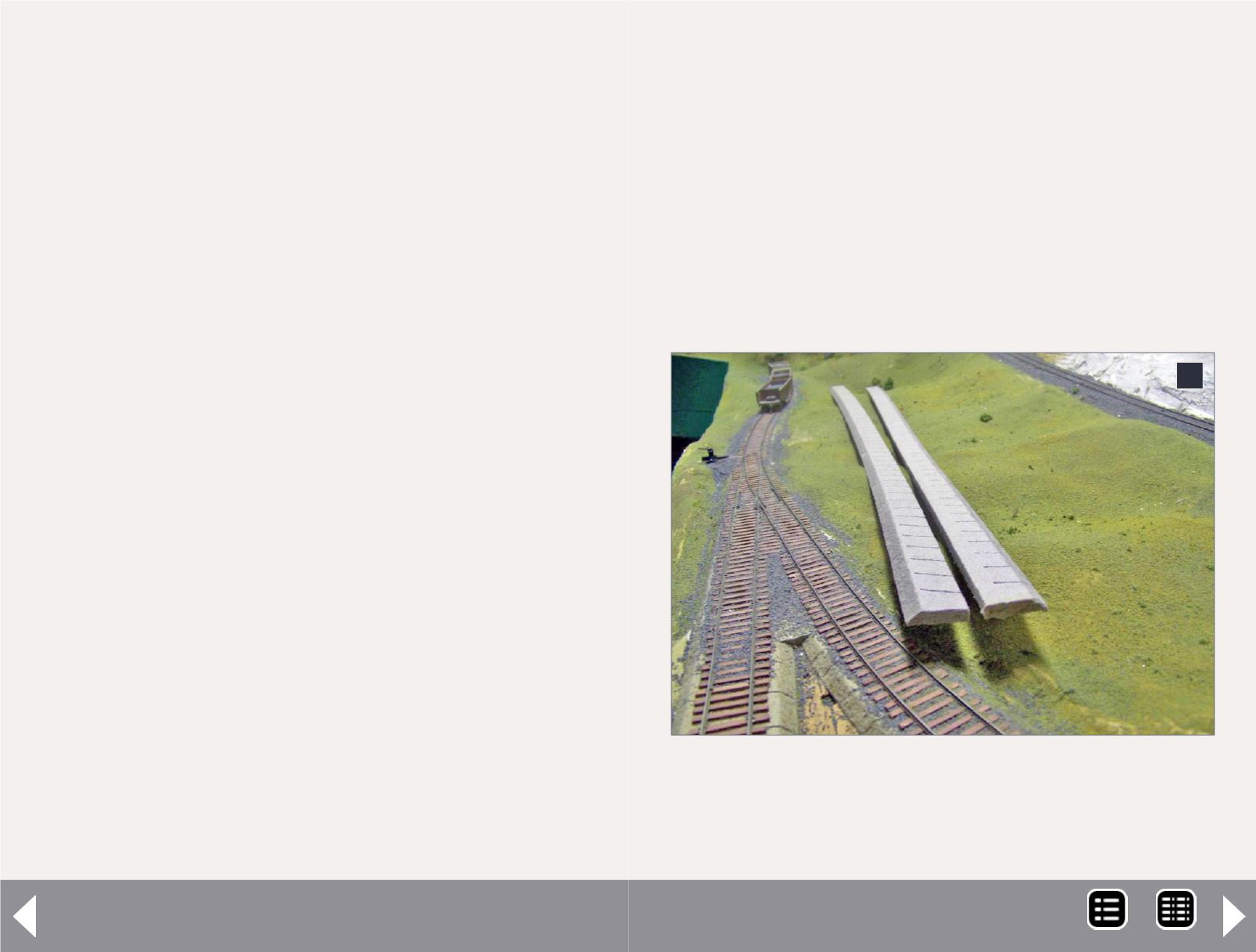
apply the ballast at the same time. Alex caulk would also work.
I believe the flexible caulk helps to control the noise. I used
Sculptamold for scenery, expecting that material to transmit less
noise than plaster. Although the Sculptamold touches the cork, I
am not hearing a “soundboard” effect.
Rick:
If train noise is a problem just get you a pair of foam ear
plugs [1], insert, and enjoy the quiet!
B Hutchinson:
If you are having sound coming from the bal-
lasted track, have a look at your sub-roadbed frame. Is it a box
open at the bottom? If so, you have a sound amplifier. I use
foam under my 3mm MDF road bed (I’m in N scale) and have a
very quiet layout.
Ted Shasta:
My highest priority is perfect, permanent vertical
and horizontal alignment of all track work. You need stiffness to
prevent the roadbed from behaving like a drum. First, my bench-
work is extremely stiff and stable with robust risers supporting
the roadbed every foot. Second, use a sub-roadbed of high qual-
ity 3/4” plywood which is screwed to the risers. Third, roadbed
of 1” thick milled basswood is screwed to the plywood sub-
roadbed. Everything is always screwed together which is easier,
faster and more easily adjusted or changed, relative to using
glue. The combination of stiffness and mass results in a near-
silent track structure. Yes, this approach is material-intensive
and expensive, but these costs can be spread over many years.
Richard Todd:
My son and I use hardboard spline hot-glued to
make the sub-roadbed. We use Alex Plus to glue down the cork
roadbed, and we use Alex Plus to glue down flex track. Our next
step is to glue cardboard strips to form the scenic contours.
Then we hot-glue red rosin paper to the cardboard frame. We
Questions, Answers & Tips - 3
cover the rosin paper with Lou Sassi’s “Ground Goop.” The last
step is to ballast the rail, securing it with thinned white glue.
The roadbed is dead quiet without scenery. It appears that the
paper and cardboard scenery doesn’t amplify the sound the way
our old hard shell did.
Bob Kingsnorth:
To my ear, our models sound nothing like the
prototype. But many other modelers will have different expecta-
tions, which is what makes the hobby a great place.
The construction techniques in the “Realistic Track” special
issue are designed to attenuate the clatter, and enhance the
sound system.
2
2. Milled Homasote roadbed over plywood or spline
will help to reduce the sounds of a rolling train
because the different materials transmit sound vibra-
tions differently.
MRH-Nov 2014


